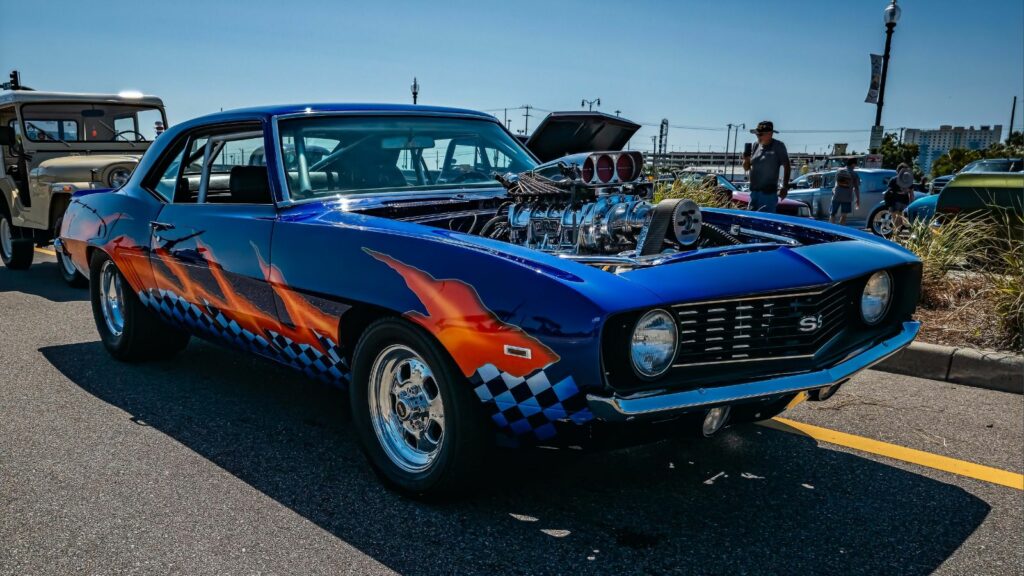Picking the right vehicle is crucial if you reside where lots of snow and slippery roads define winter. Regardless of how good or strong they look, some models aren’t designed for driving in the snow. These are 22 cars that are most likely to get stuck in snow:
Chevrolet Camaro
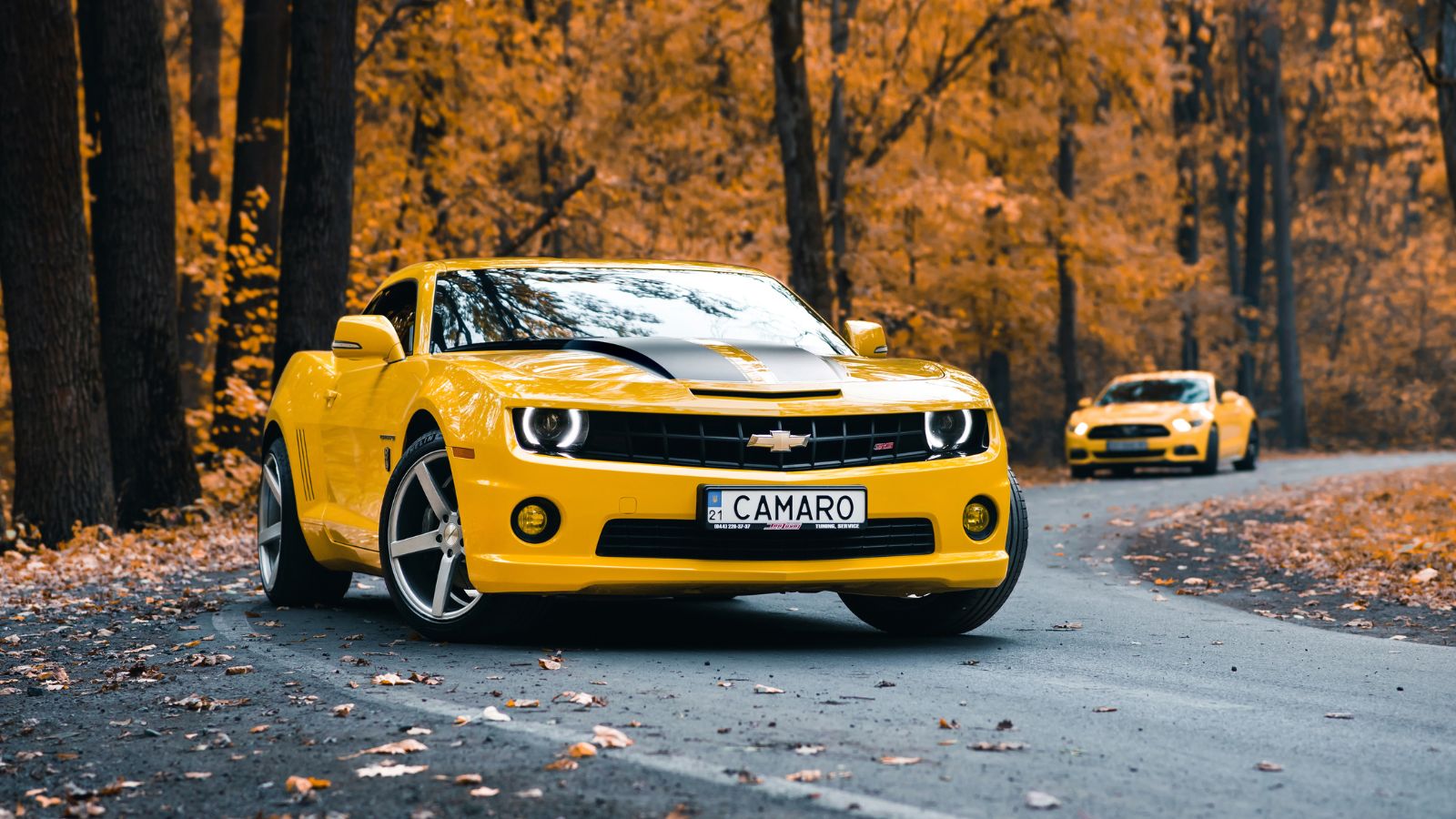
The Chevrolet Camaro is an iconic American muscle car that tends to falter in winter weather because of its rear-wheel drive (RWD). Engines vary from a 2.0-liter turbocharged inline-four to a 6.2-liter V8, with 0-60 mph times between 5.4 seconds and 3.5 seconds based on trim. Although the Camaro’s interior features sleek features like an 8-inch touchscreen and optional heated seats, the Camaro without AWD should stay in the garage during blizzards because the ride height is too low and visibility is poor, making driving on snowy roads difficult.
Ford Mustang
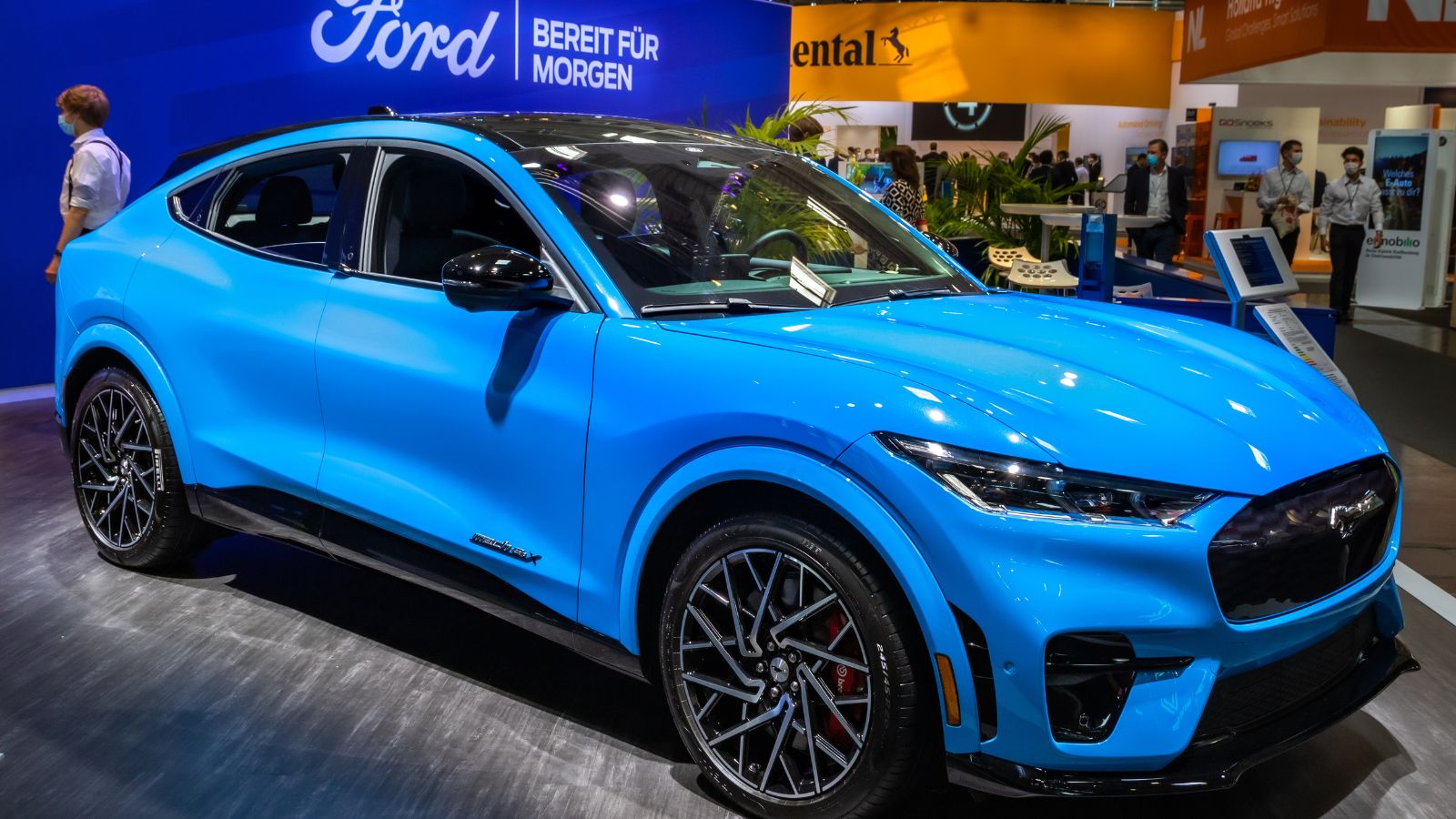
Debuting on roads in 1964, the Ford Mustang still symbolizes American performance. But, similar to the Camaro, it struggles with its RWD design in the snow. Engine options include a 2.3-liter turbo four-cylinder to a 5.0-liter V8, with a 0-60 mph time ranging from 5.1 to 3.3 seconds. However, the poor ground clearance and absence of AWD make it impractical for snowy areas. Despite today’s traction control systems, the Mustang’s powerful rear wheels have trouble staying stable on icy roads, making it a bad car to drive in the snow.
Dodge Challenger
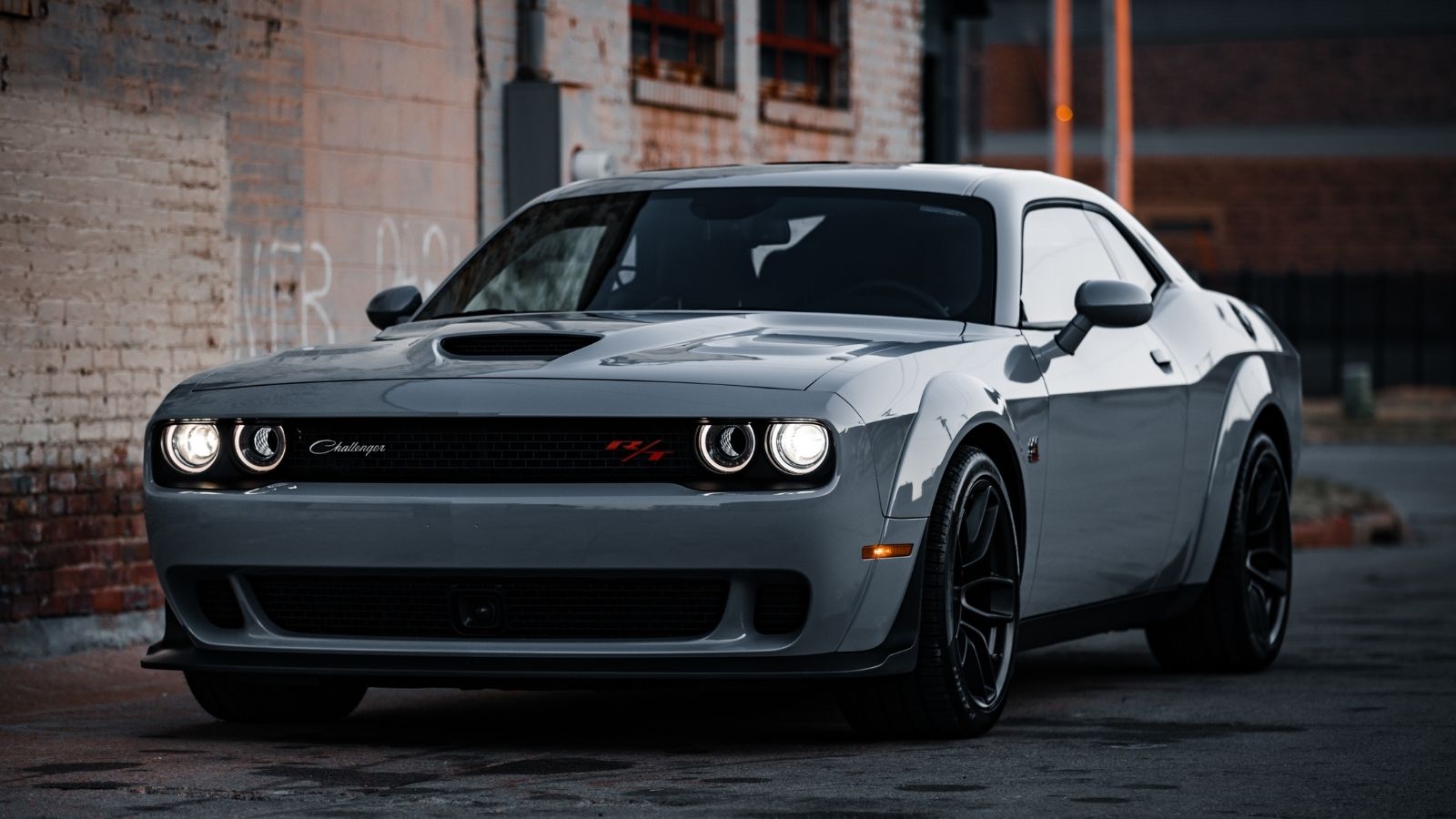
First introduced in 1970, the Dodge Challenger is another muscle car that does not handle as well when the snow begins to fall. Driven by engines ranging from a 3.6-liter V6 to a supercharged 6.2-liter HEMI V8, it has a 0-60 mph rating of between 5.3 and 3.4 seconds. Its RWD layout and massive curb weight predispose it to skidding on slippery roads. Its enormous size and weight render tight turns almost impossible when the roads become slippery.
Mazda MX-5 Miata
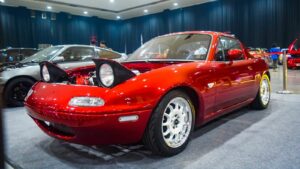
This iconic roadster was introduced in 1989. Although the 1.5-liter and 2.0-liter four-cylinders give a responsive drive and 0-60 mph speed of 5.7 seconds, the Miata’s RWD and light weight make it a terror on snowy roads. The interior is simple and cozy, with heated seats on premium trim levels. Still, the low seating position and absence of ground clearance make winter driving hazardous, mainly because it lacks the weight to force its tires down into the snow, which spins the wheels in vain.
BMW M4
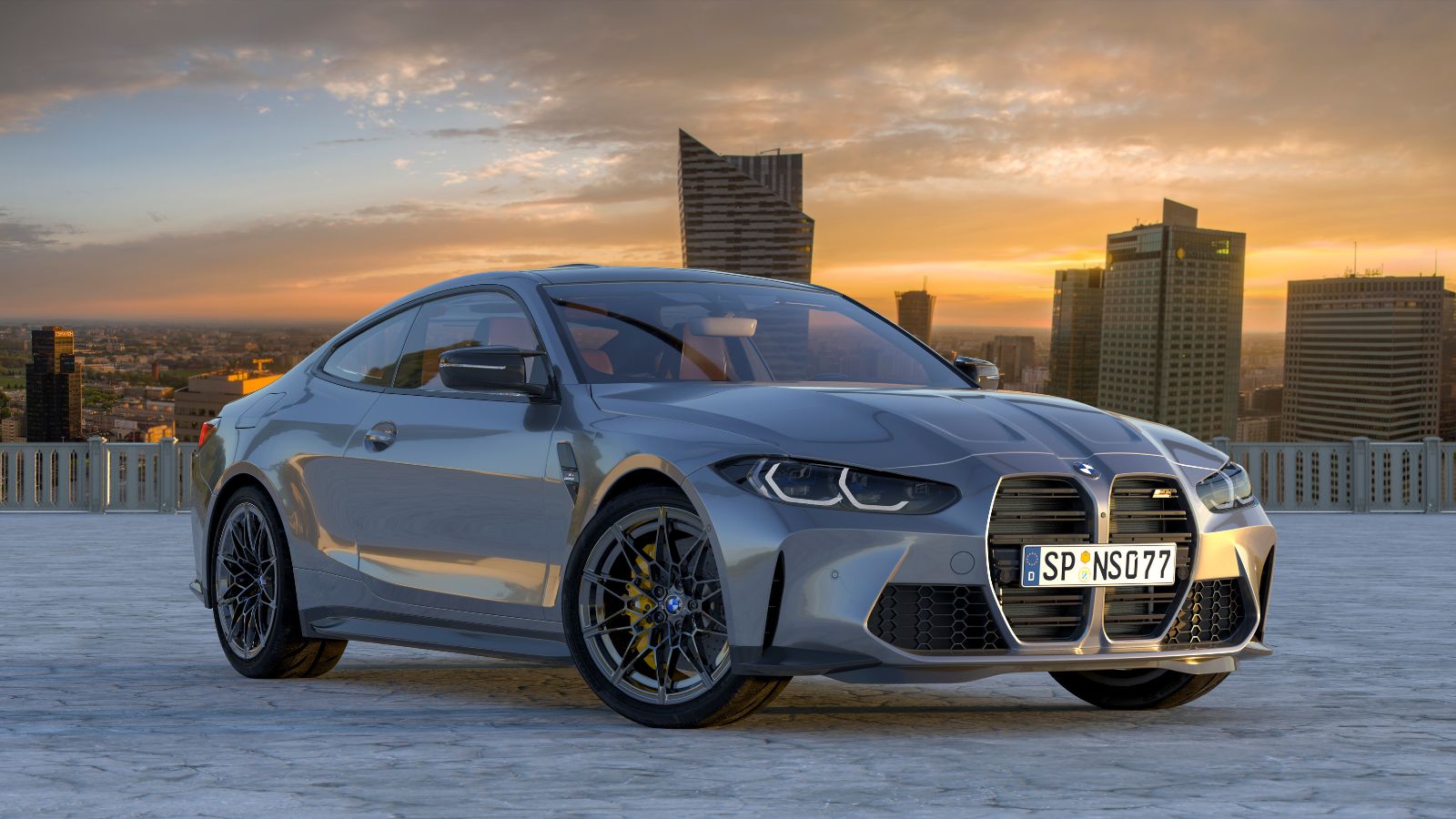
The BMW M4, initially released in 2014, boasts a 3.0-liter twin-turbocharged inline-six engine producing 473 to 503 horsepower, with a 0-60 mph time as low as 3.8 seconds. The upscale interior features Merino leather, heated seats, and high-tech features. Still, its RWD and firm suspension tuning have difficulty holding on to slippery roads, so it’s not ideal for snowy environments. Even with sophisticated driver aids, the M4’s high horsepower overpowers its rear tires in snowy or icy conditions, making it a terrible car to drive in harsh winter weather.
Chevrolet Corvette (C8)

The C8 Corvette, which was launched in 2020, is Chevrolet’s first mid-engine sports car. Propelled by a 6.2-liter V8, it accelerates from 0-60 mph in 2.9 seconds. Its high-tech interior includes a 12-inch digital gauge cluster and upscale materials, but its rear-wheel-drive (RWD) setup and low profile make it slide instead of glide on snowy roads. Its summer tires, designed for maximum traction on dry roads, become extremely slippery when cold. Even with the sophisticated traction control, the C8’s low ground clearance means it will easily get stuck in deeper snow, making it a bad car to own if you live in cold weather.
Porsche 911 Carrera
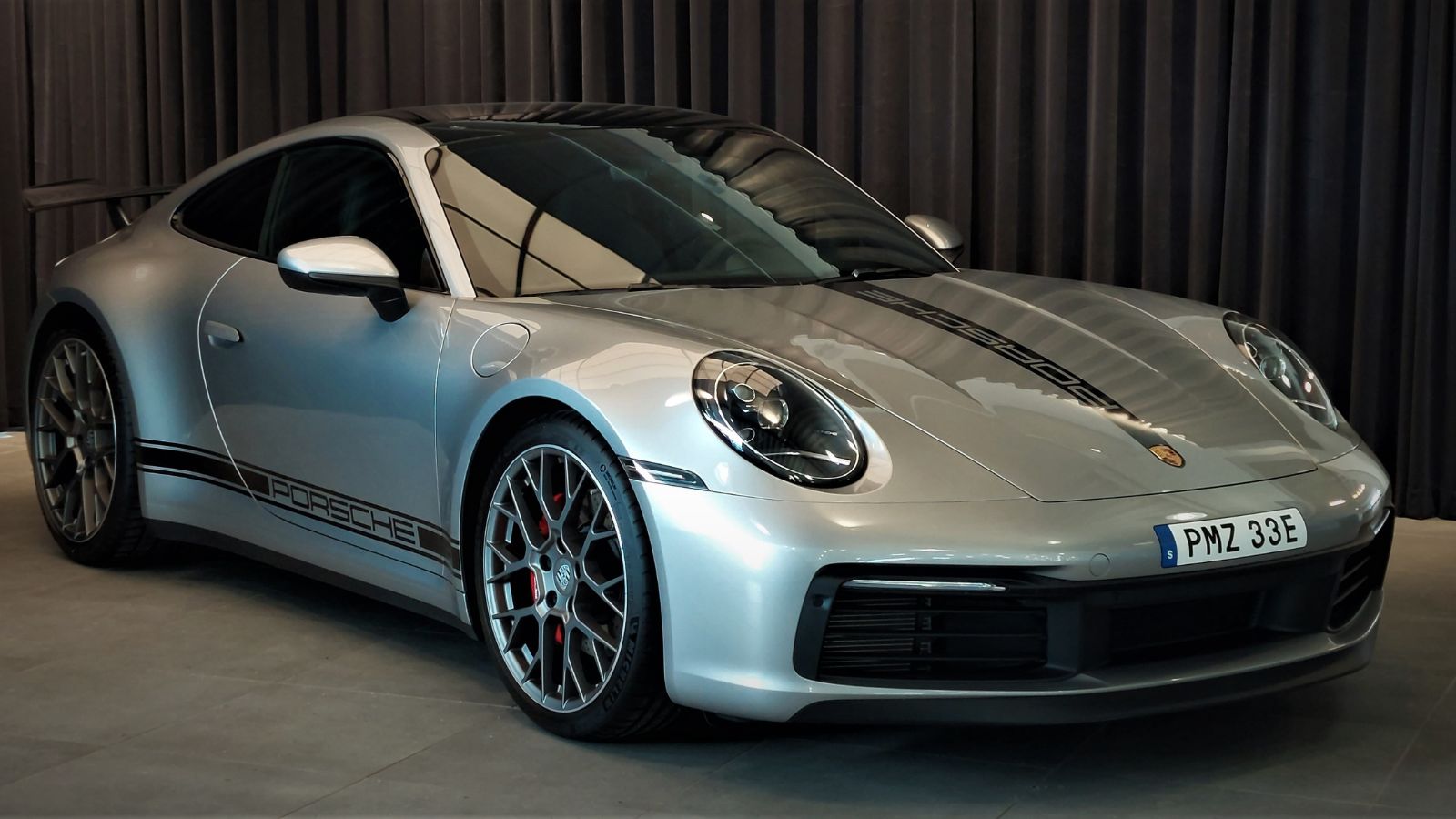
Debuted in 1964 and designed by Ferdinand “Butzi” Porsche, the Porsche 911 Carrera is a performance stalwart. Its 3.0-liter twin-turbo flat-six engine propels it from 0-60 mph in as few as 4.0 seconds. The 911’s opulent interior features leather seating, high-tech features, and driver-customizable modes. However, the rear-engine, rear-wheel-drive (RWD) arrangement is tricky to handle in snowy conditions without all-wheel drive (AWD). The rear-heavy weight distribution tends to leave the back end susceptible to fishtailing on slippery surfaces. Porsche’s stability management system does assist, but it can’t completely make up for the tendency of the car to lose traction on icy roads.
Tesla Model S Plaid
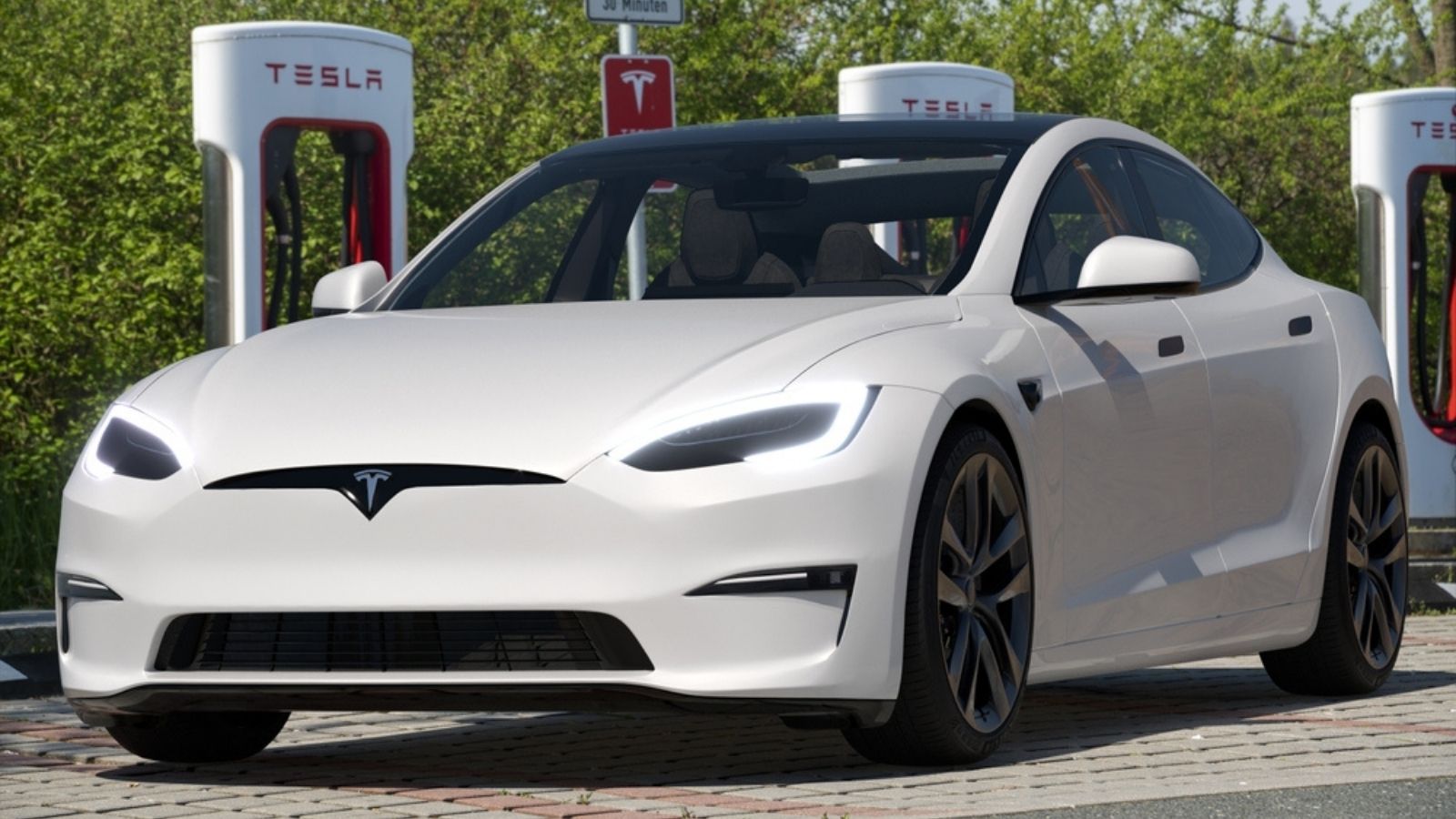
Debuted in 2021 with design input from Franz von Holzhausen, the Tesla Model S Plaid features a fully electric powertrain delivering 1,020 horsepower and accelerating from 0 to 60 mph in a scorching 1.99 seconds. Even with its AWD, the weight of the battery pack and the extreme performance tuning make it tricky to drive in snowy conditions. Though exhilarating on dry pavement, the immediate torque application is challenging to manage on slippery roads. Also, the low ride height and performance tires minimize their capacity to operate on snowy surfaces efficiently.
Toyota Supra (A90)
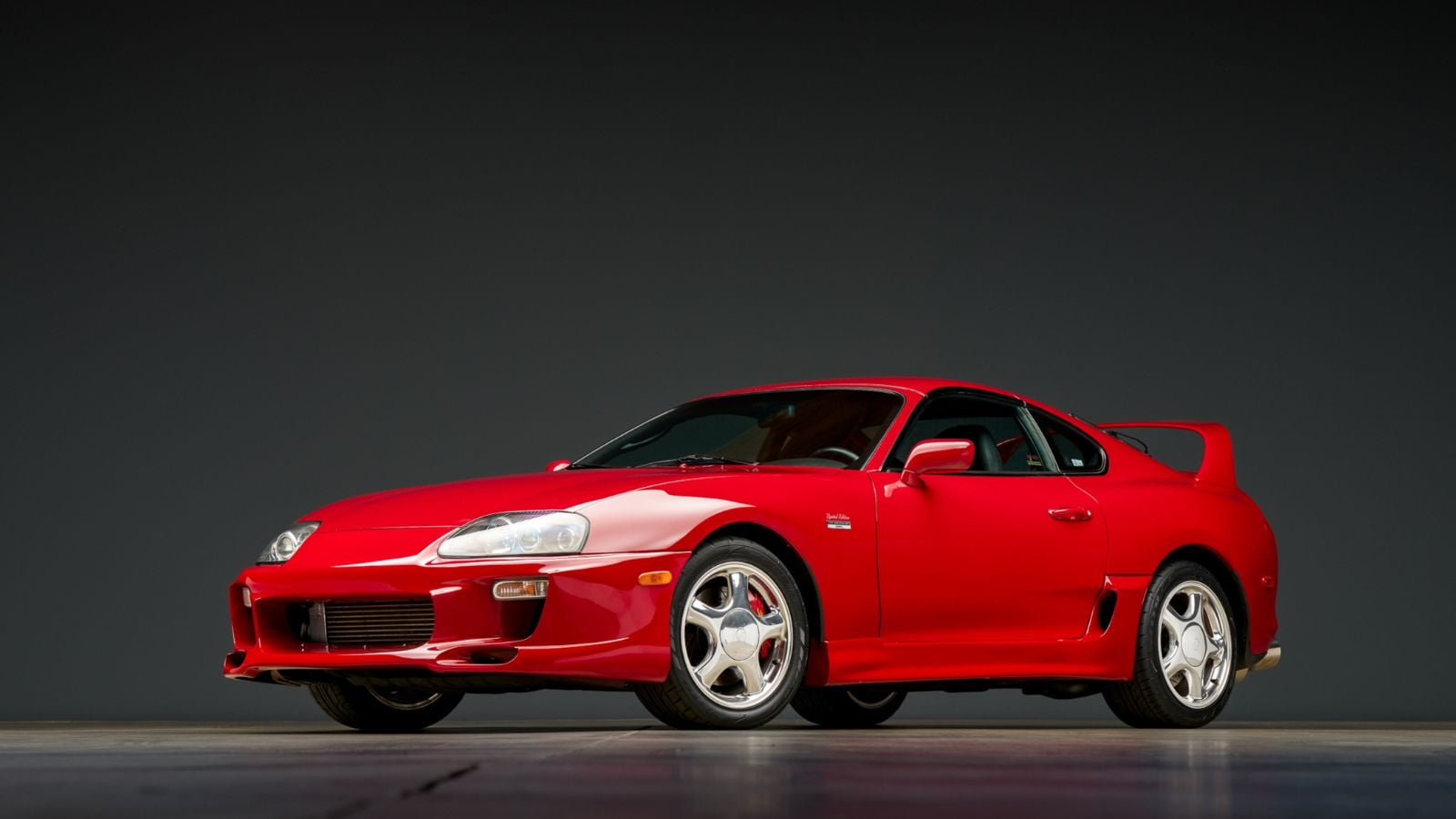
In 2019, the A90 Toyota Supra was co-designed with BMW. It has a 3.0-liter turbocharged inline-six engine making 382 horsepower, which enables it to run from 0 to 60 mph in 3.9 seconds. Though the Supra’s cabin is sporty and refined, with leather-trimmed seats and an 8.8-inch infotainment screen, its rear-wheel-drive (RWD) configuration and low ground clearance render it ill-equipped for snowy roads. It has a stiff suspension that prioritizes handling over comfort, resulting in sliding rather than driving on icy or snowy roads.
Nissan 370Z
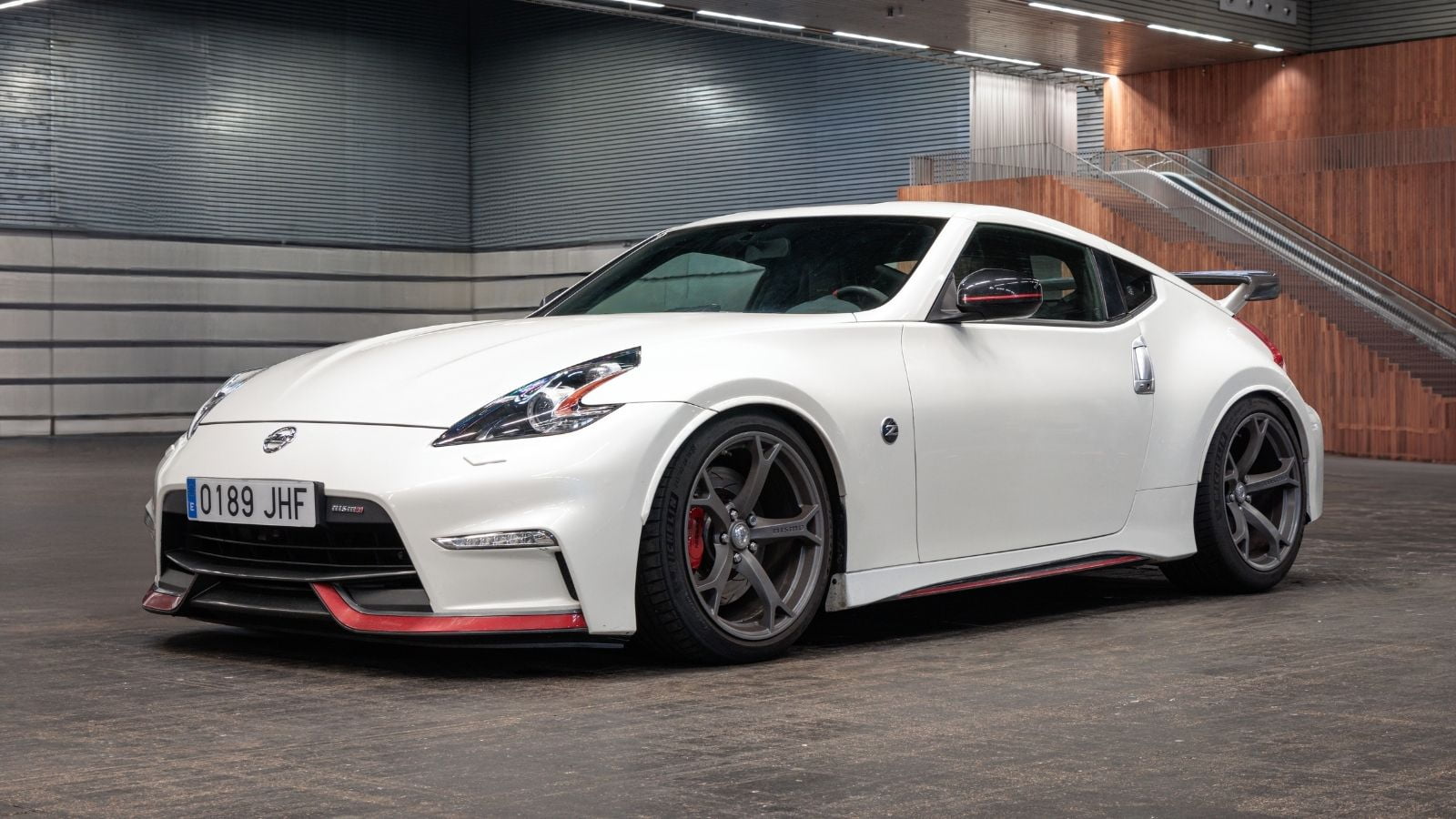
The Nissan 370Z debuted in 2009. Its 3.7-liter V6 engine generates 332 horsepower and accelerates from 0 to 60 mph in about 5.0 seconds. The interior has optional heated seats and a simple infotainment system. Unfortunately, the RWD setup and low ride height make keeping the wheels on icy roads difficult, transforming mundane errands into a snow-day horror show. The firm suspension, which was engineered for cornering on dry roads, enhances discomfort and instability in snow, making it a bad car to drive in cold winter conditions.
Fiat 124 Spider
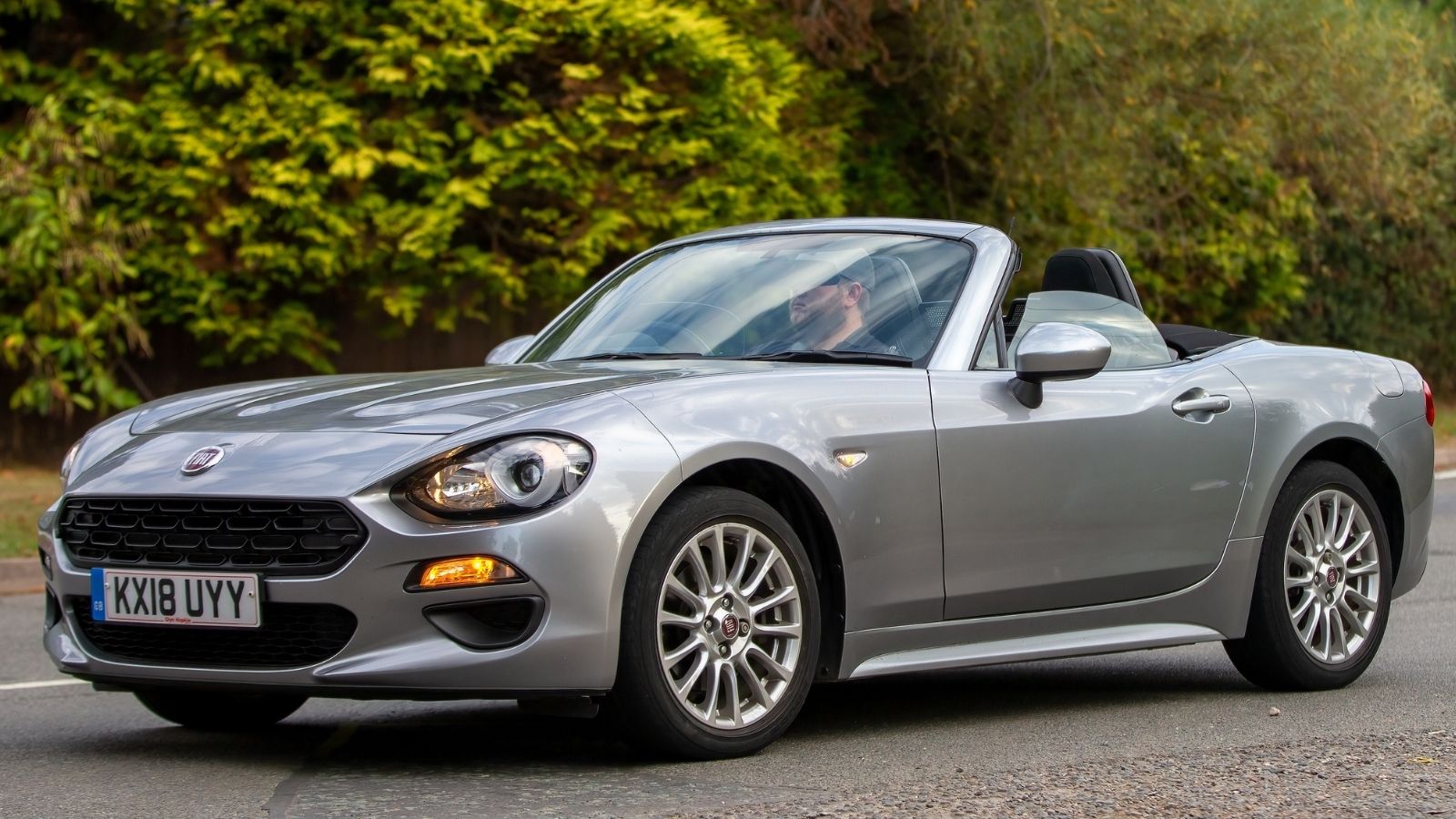
First introduced in 1966 and reborn in 2016 through a partnership between Fiat and Mazda, the new 124 Spider’s 1.4-liter turbocharged inline-four engine puts out 160 horsepower and propels it from 0 to 60 mph in approximately 6.3 seconds. Its interior is small, with top-shelf leather seats and a 7-inch screen in higher models. Its RWD and light curb weight make it particularly susceptible to being stuck in the snow, with rear tires without a grip that makes uphill ascents or icy driveways a nightmare.
Mercedes-AMG GT
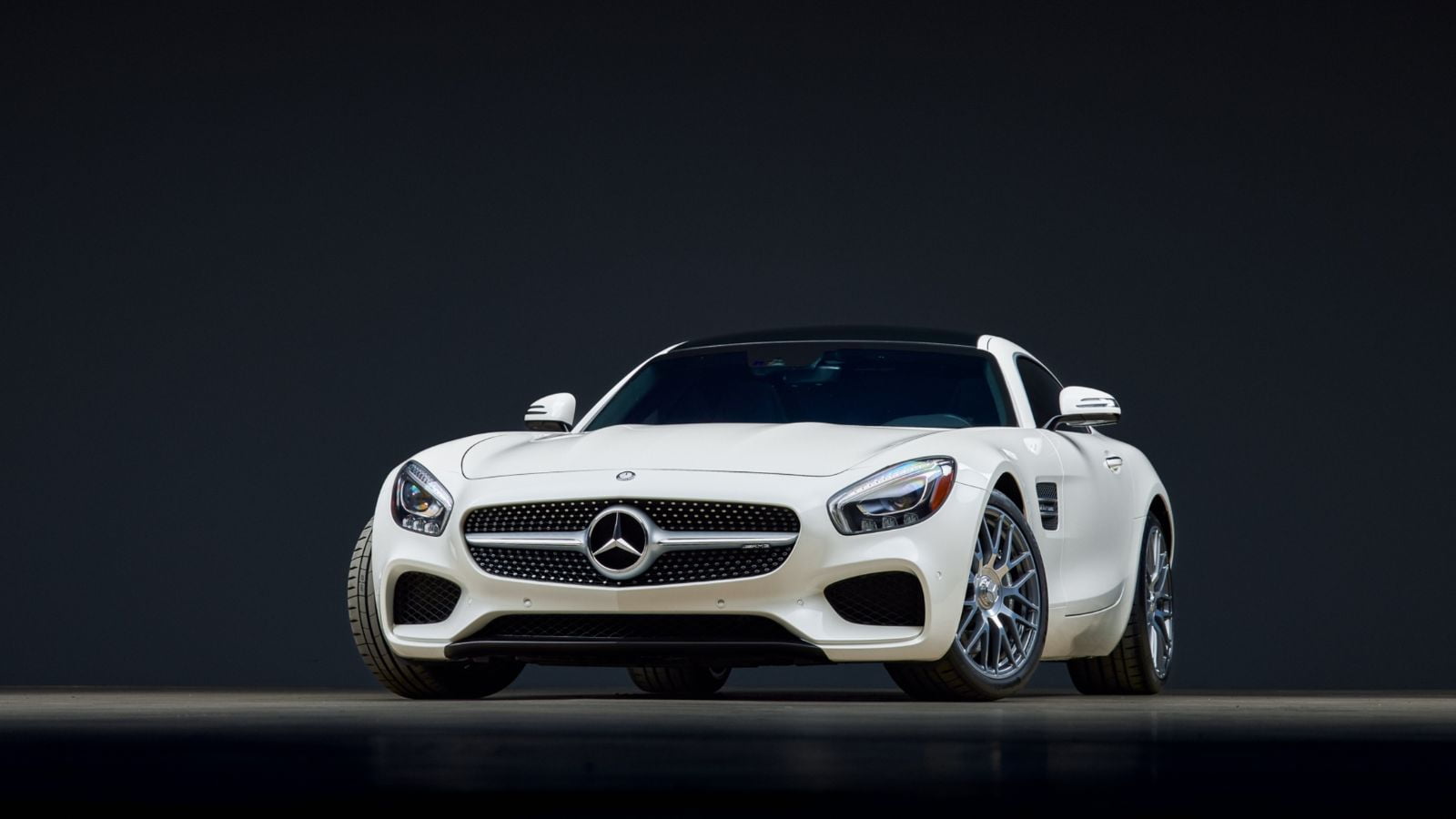
The Mercedes-AMG GT was first released in 2014. It features a 4.0-liter twin-turbo V8 engine with 523 horsepower, rocketing from 0 to 60 mph in 3.7 seconds. The luxurious interior has Nappa leather, a 10.25-inch infotainment screen, and heated seats. However, the RWD system, wide tires, and low stance make it challenging to navigate snowy roads without slipping. It has advanced stability systems, but the AMG GT’s immense power overwhelms its tires on icy surfaces.
BMW i8
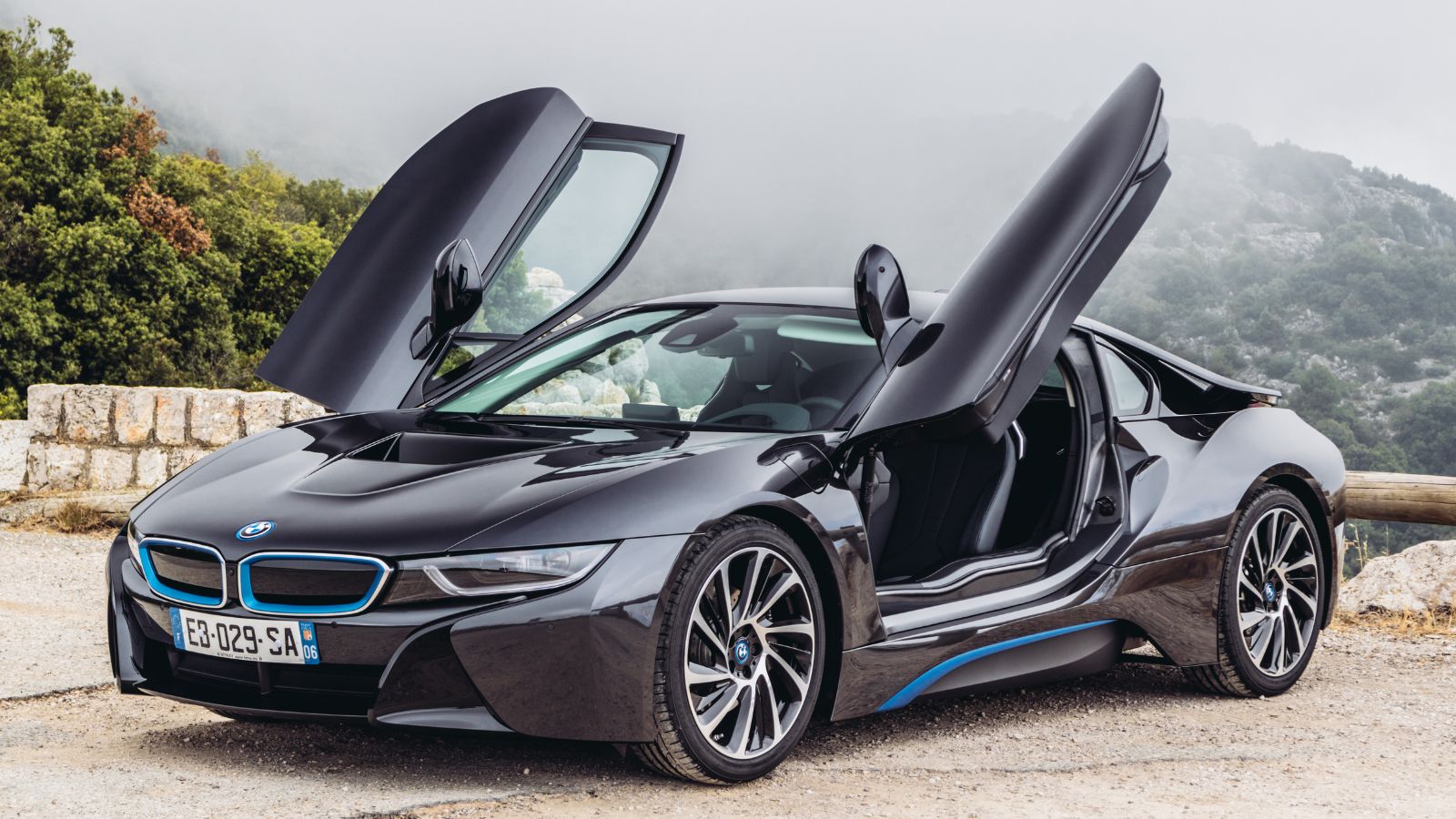
Introduced in 2014, the BMW i8 is a plug-in hybrid sports car with a futuristic look. With a 1.5-liter turbocharged three-cylinder engine coupled with an electric motor, the car produces 369 horsepower, which propels it from 0 to 60 mph in 4.2 seconds. The scissor-door-fitted interior is aerodynamic, with advanced climate control and leather trim. However, the RWD bias and low-profile tires cause the i8 to have trouble keeping a grip on icy or snowy roads, particularly as its aerodynamics come at the expense of practicality during winter weather.
Subaru BRZ
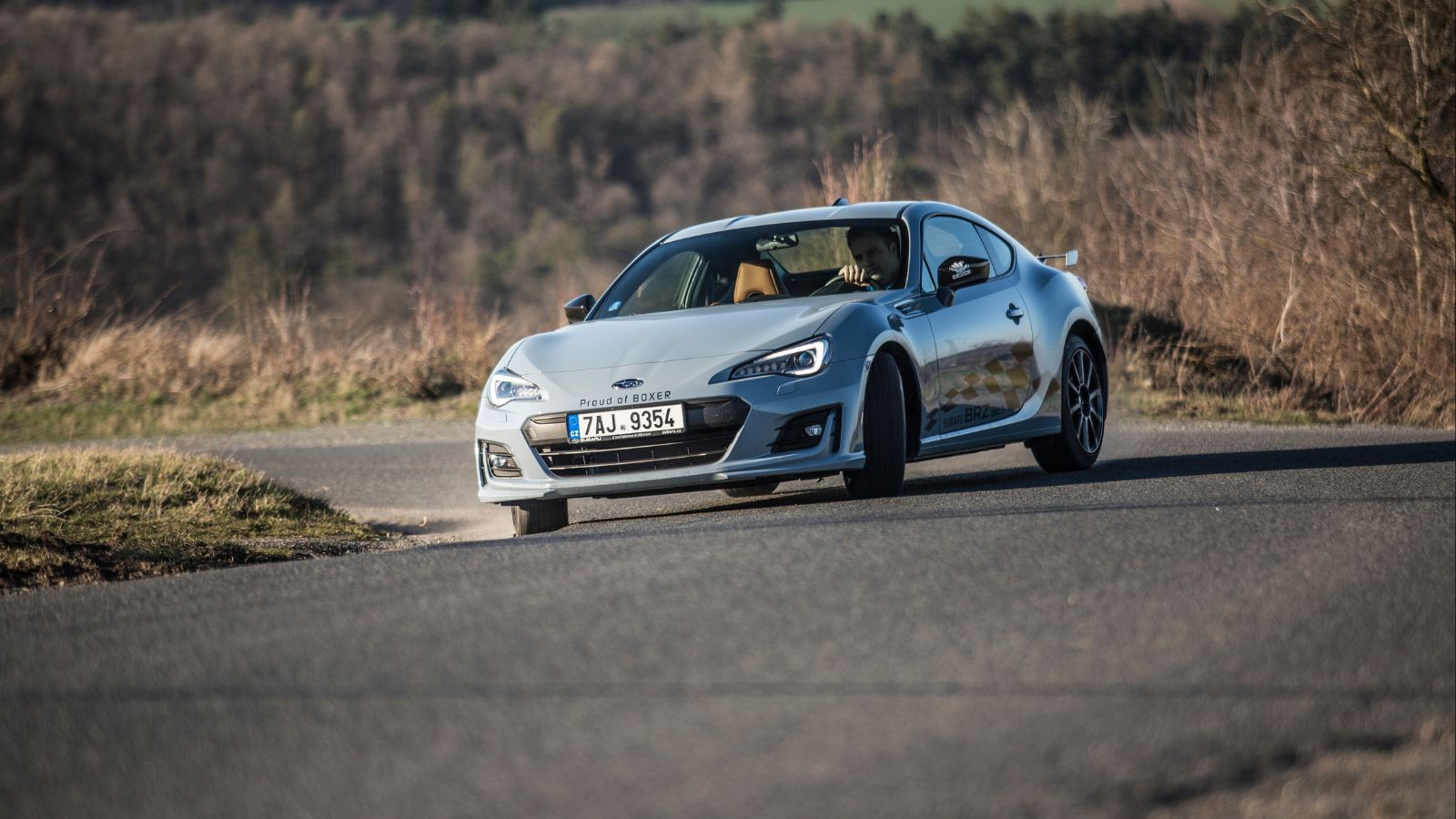
Released in 2012, the Subaru BRZ features a 2.4-liter flat-four engine that makes 228 horsepower, reaching 0-60 mph in 6.0 seconds. The driver-oriented cockpit contains sports seats, a touchscreen display, and optional heated seats. Beyond the AWD reputation of Subaru, the BRZ is RWD, so it suffers from bad traction in snow, particularly without winter tires. Its lightweight structure, though excellent for handling when driving on dry pavement, leaves it more prone to sliding and skidding on ice.
Dodge Viper
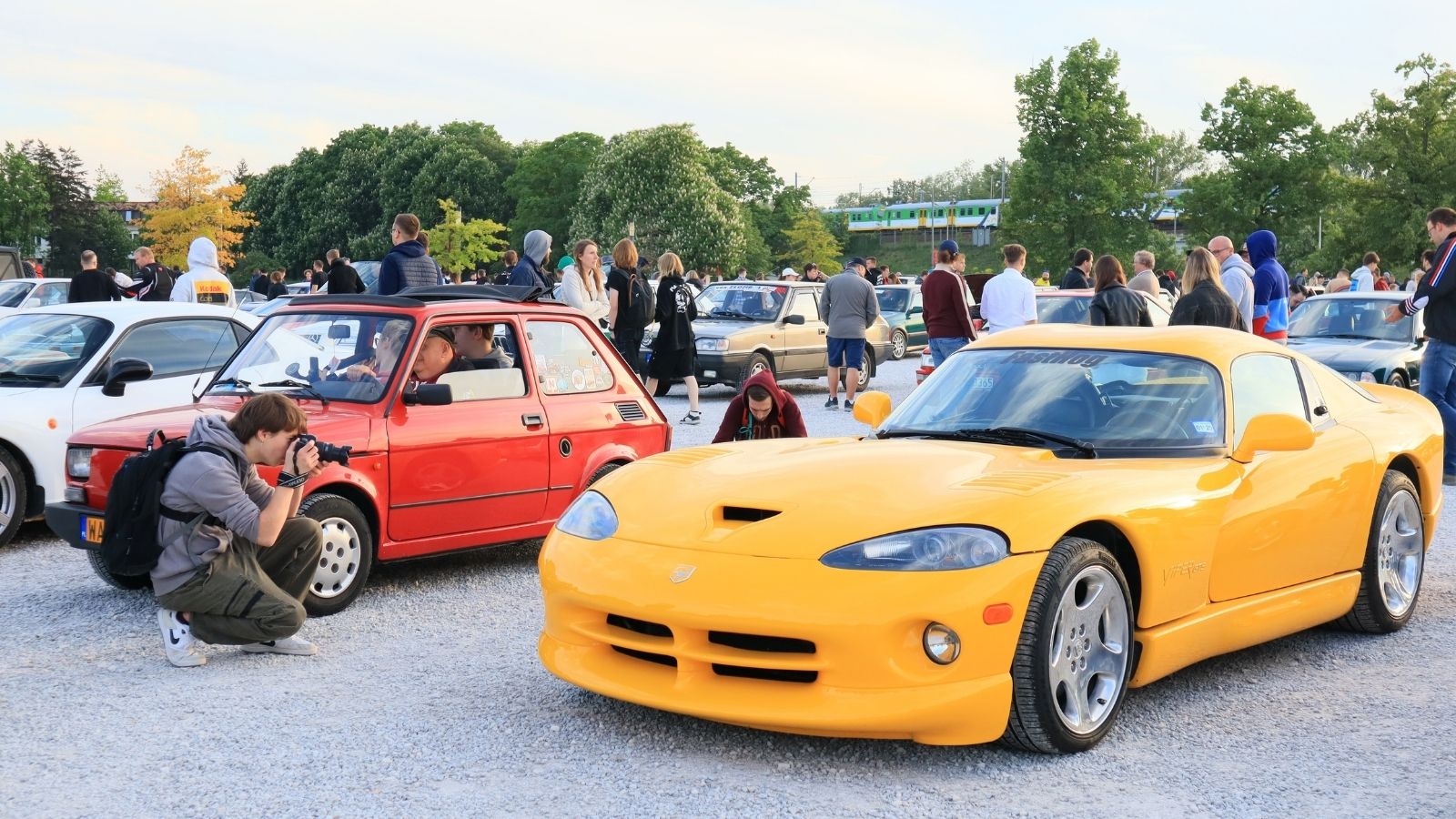
Initially introduced in 1992, the Dodge Viper has an 8.4-liter V10 engine that churns out 645 horsepower and accelerates from 0 to 60 mph in 3.5 seconds. The Viper’s interior boasts leather-trimmed seating, a Uconnect infotainment system, and a performance-oriented design, but it does not include winter-friendly features such as heated seats. Its rear-wheel-drive (RWD) setup, aggressive suspension, and fat summer tires make driving a terror in snowy conditions, where it’s likely to spin out rather than stay on course.
Jaguar F-Type
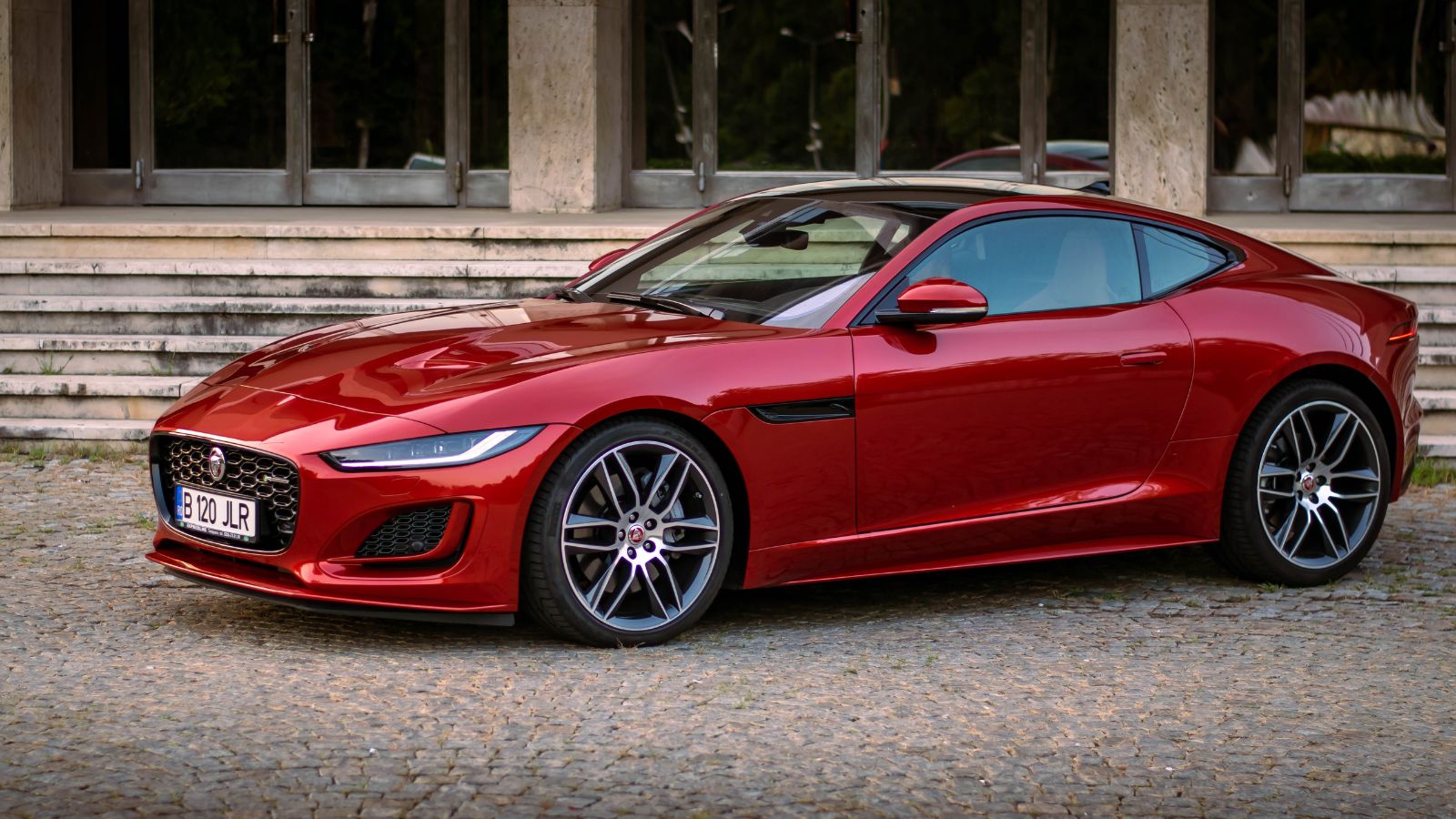
The Jaguar F-Type is a lean sports car with engine choices that run from a 2.0-liter turbocharged inline-four to a 5.0-liter supercharged V8. In its peak state, it will accelerate from 0-60 mph in 3.5 seconds. The interior is upscale, with Windsor leather seats, a digital driver’s display, and an easy-to-use touchscreen interface. However, most models’ low ground clearance and the RWD setup cause them to slip on icy pavement, particularly in heavy snow. The F-Type’s aggressive power delivery makes winter driving a white-knuckle affair.
Alfa Romeo 4C
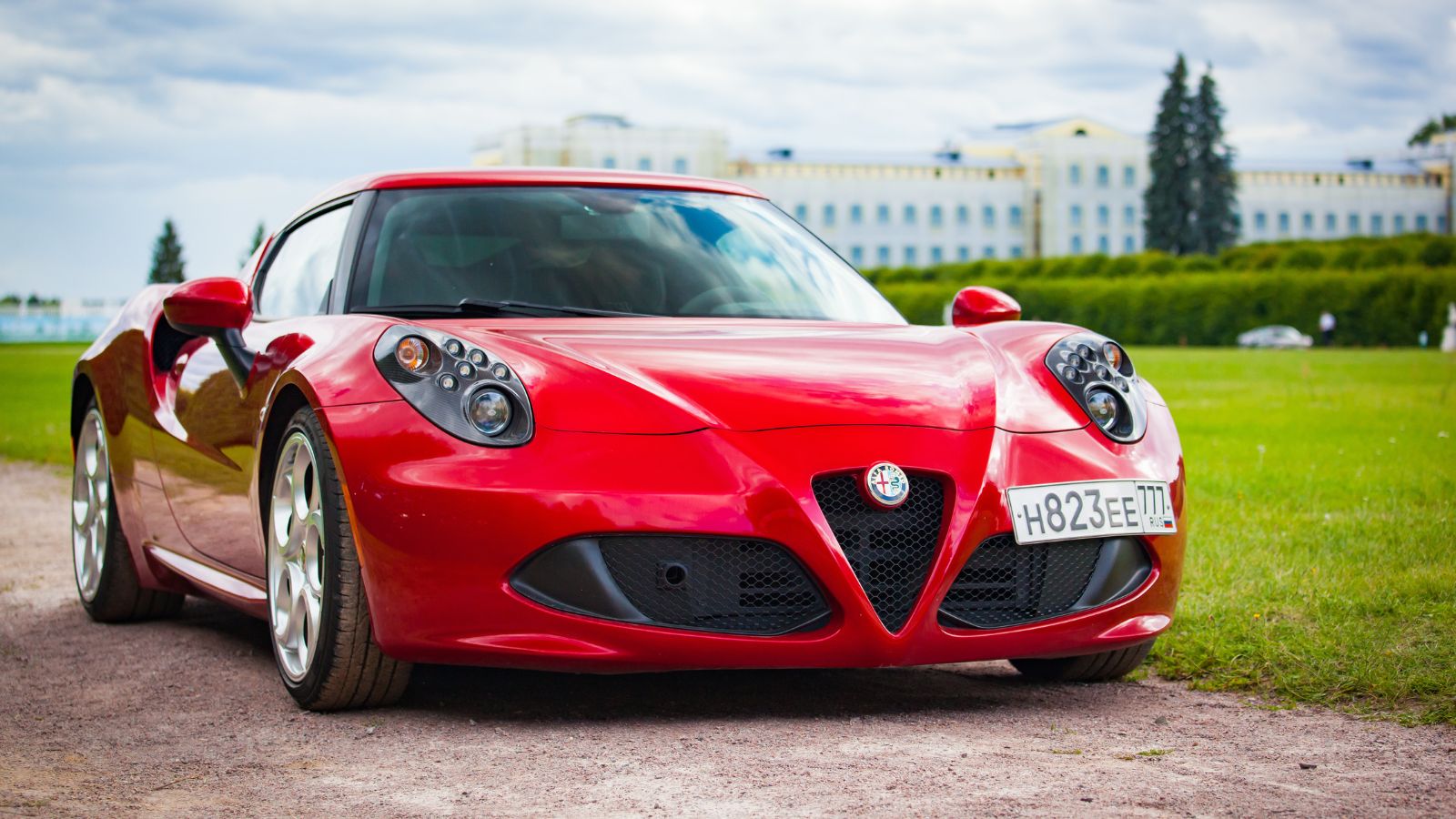
The Alfa Romeo 4C was introduced in 2013. It is a lightweight sports car with a 1.75-liter turbo inline-four engine producing 237 hp, going 0-60 mph in 4.1 seconds. Its sleek interior has leather bucket seats and a tiny digital instrument panel. It is exhilarating to drive on dry roads, but the 4C’s RWD system, inexperienced traction control, and minimal curb weight leave it vulnerable to sliding in the snow. Its carbon-fiber construction, while excellent for weight reduction, does not contribute much to stability on slippery roads.
Lexus LC 500
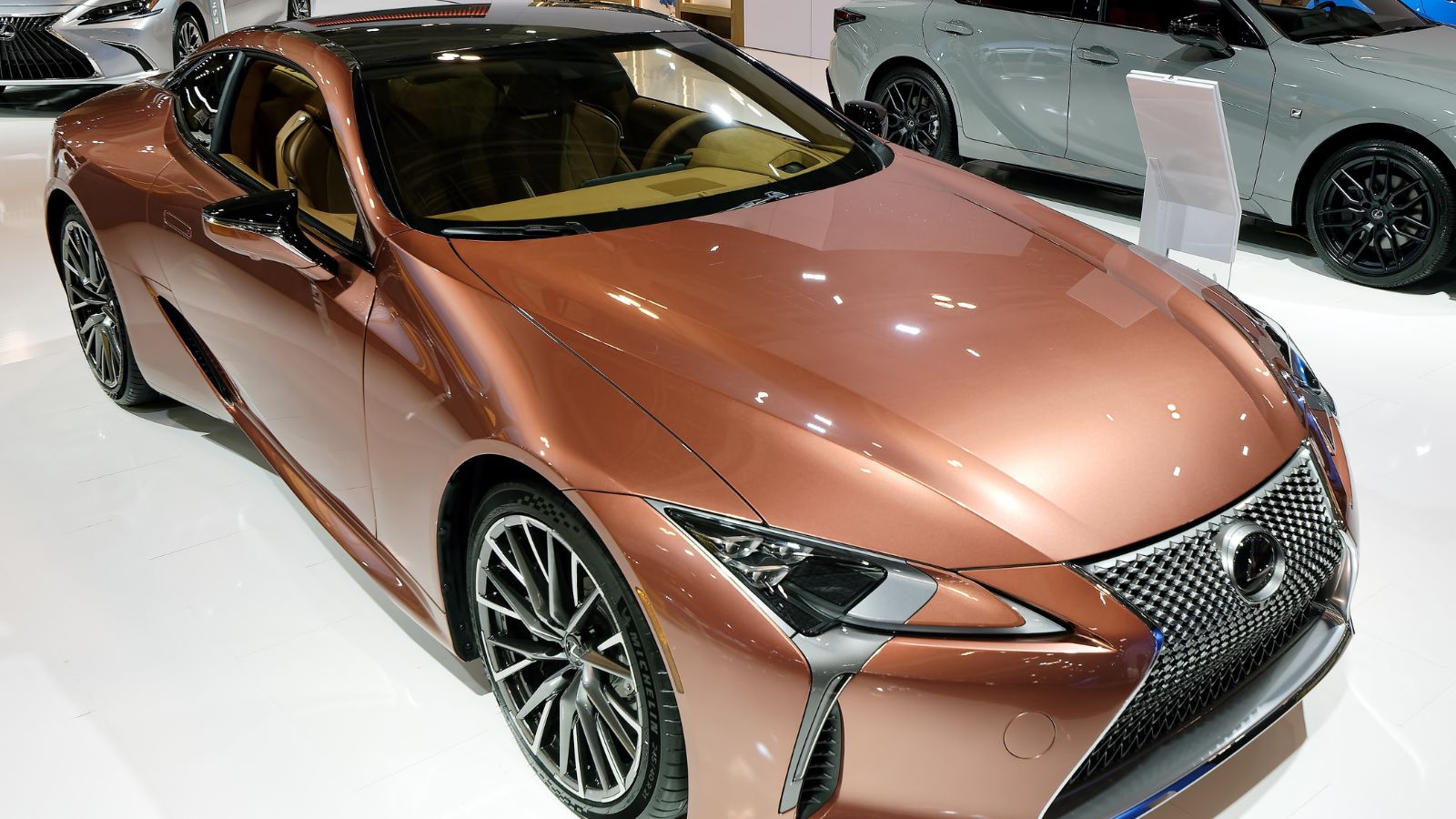
The Lexus LC 500 boasts a 5.0-liter V8 engine outputting 471 horsepower and moving 0-60 mph in 4.4 seconds. Inside is upscale in hand-stitched leather upholstery, ambient lights, and a 10.3-inch infotainment display. The comfort has a downside since RWD traction and the extensive, low-profile tires are detrimental in snowy weather conditions where handling and stability dramatically degrade.
Audi R8 (RWD Version)
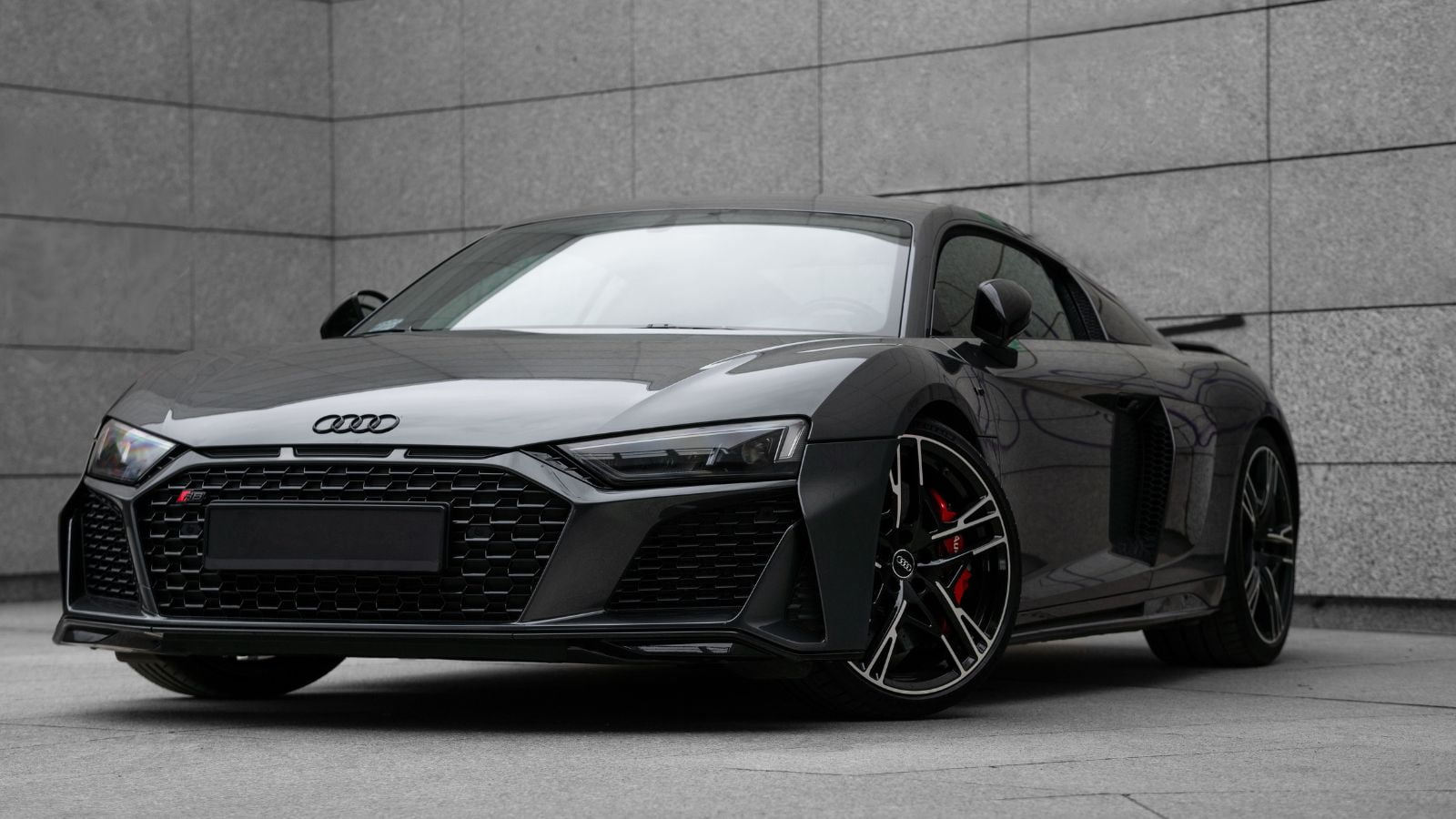
The Audi R8’s RWD model, with its 5.2-liter V10 engine, brings 562 horsepower and hits 0-60 mph in 3.6 seconds. Its interior features Nappa leather quality, a virtual cockpit instrument panel, and luxurious materials. While Audi’s Quattro AWD system excels in winter, the RWD model struggles in the snow due to reduced grip and low stance. Without the extra traction from AWD, the R8’s sheer power can turn a snowy drive into an uncontrollable slide.
Chevrolet Corvette (C7)

The C7 Corvette features a 6.2-liter V8 engine that generates 455 horsepower, which enables it to go from 0-60 mph in 3.8 seconds. The car’s interior has heated and ventilated seats, a premium Bose audio system, and leather finishes. But with its RWD configuration and low ground clearance, even a light snowfall will transform your Corvette into a snow sculpture. The high-performance tires, which are intended for optimal traction on dry pavement, are slick and useless when it’s cold and snowy.
Honda S2000
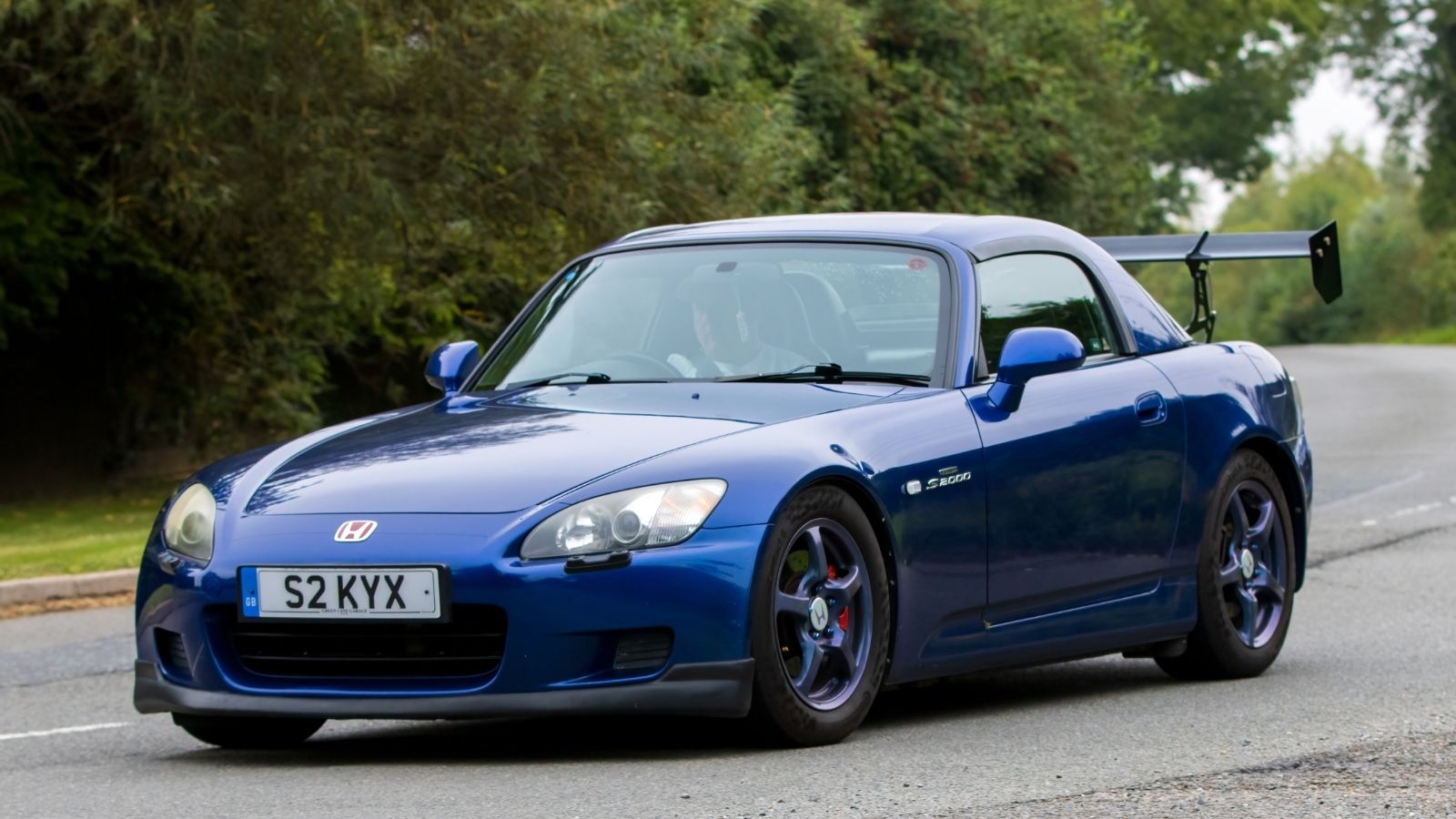
Fitted with a 2.2-liter inline-four engine that makes 237 horsepower, the Honda S2000 accelerates to 0-60 mph in 5.4 seconds. The stripped-down interior is driver-oriented, with sporty leather bucket seats and plain infotainment. However, the RWD layout, light curb weight, and absence of traction control in previous models render it poorly adapted for snow-covered roads. A mere dusting of snow is enough to induce wheel spin, so winter driving becomes unpredictable and anxiety-provoking.
Maserati GranTurismo

The Maserati GranTurismo boasts a 4.7-liter V8 producing 454 horsepower, with a 0-60 mph time of 4.7 seconds. The interior is refined, with Poltrona Frau leather, a touchscreen infotainment system, and four comfortable seats. For all its luxurious appearance, the RWD configuration and heavy body conspire against it in the snow, where it frequently gets stuck in winter’s icy clutches. Its rear-biased weight distribution only makes things more difficult, and sudden oversteer is a constant threat.
18 Budget-Friendly Electric Cars That Last Longer Than Their Loans — Economical Electrics
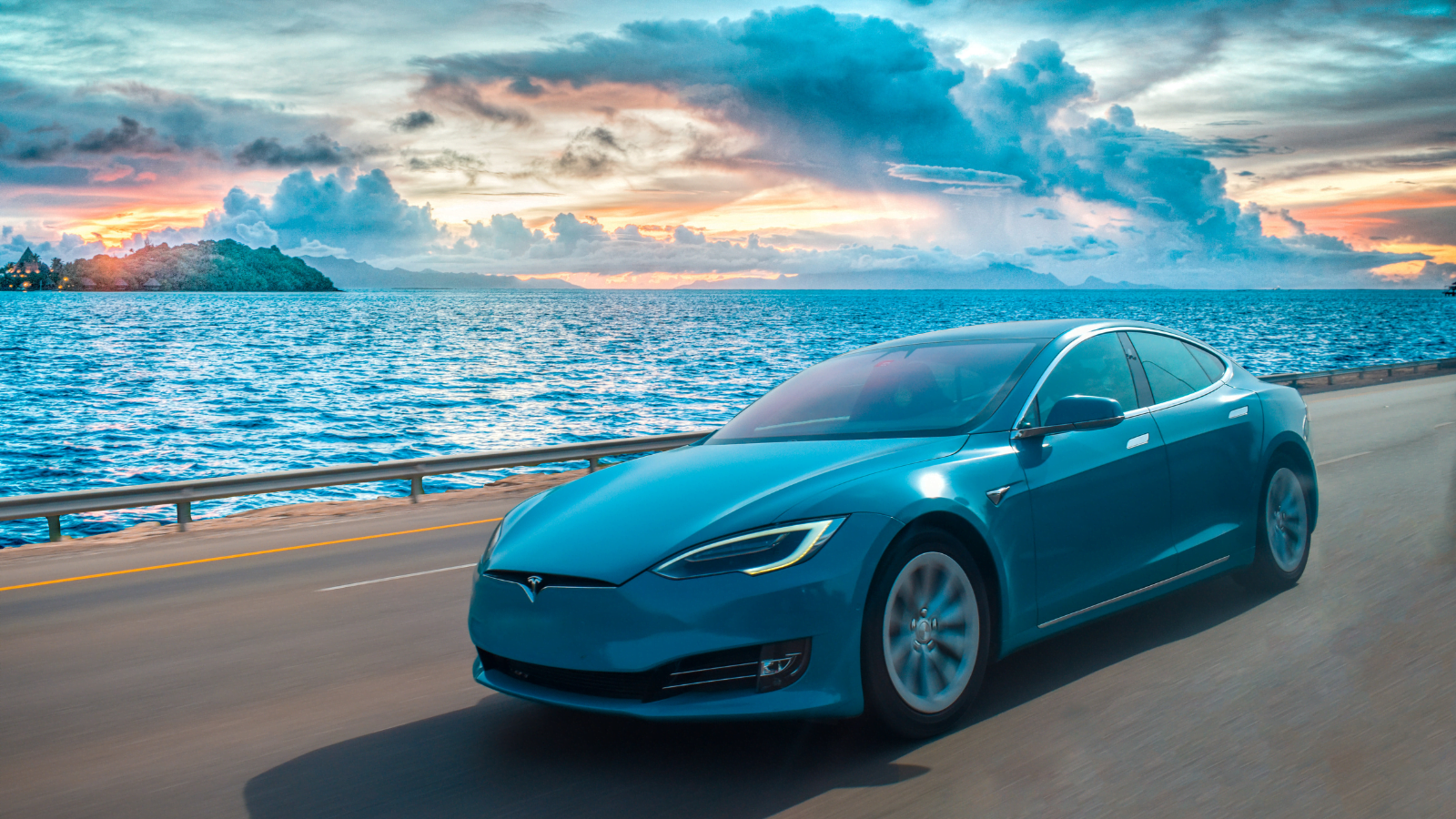
Electric vehicles are no longer a luxury for the elite—they’re a smart investment for the everyday driver. With manufacturers stepping up to the plate, affordable EVs now deliver on reliability, range, and modern comforts. Here’s a look at 18 economical electric cars engineered to outlast their payment plans.
18 Budget-Friendly Electric Cars That Last Longer Than Their Loans — Economical Electrics
